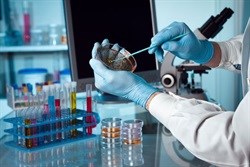Antibiotic resistance occurs when bacteria change so that those antibiotics that were developed to destroy them can no longer control them. Superbugs are those bacteria that are resistant to several types of antibiotics. Examples of antibiotic-resistant bacteria include Staphylococcus aureus, Salmonella and E. coli, Klebsiella pneumoniae, Mycobacterium tuberculosis, and Neisseria gonorrhoea.
A World Health Organisation (WHO) report on antimicrobial resistance, including antibiotic resistance, released earlier this year states that, "This serious threat is no longer a prediction for the future, it is happening right now in every region of the world and has the potential to affect anyone, of any age, in any country."
- Annually, drug-resistant bacteria kill 23,000 people in the US and 25,000 in Europe.
- Every five minutes, a child in South Asia dies from drug-resistant bacteria.
- Extensively drug-resistant tuberculosis (XDR-TB) has been identified in 92 countries.
- At least 10 countries, including South Africa, have reported cases of untreatable gonorrhoea, a dangerous sexually transmitted disease.
The recent WHO report has also confirmed that superbugs able to resist Carbapenems, which are the toughest of all antibiotics, are now in evidence worldwide. Of concern is the fact that there are no new antibiotics in development to treat these Carbapenem-resistant strains. Superbugs are now also no longer confined to hospitals and other healthcare environments, meaning that everyone is at risk of being infected.
The cause is answer is the repeated and improper use of antibiotics. According to the Centre for Disease Control, as many as half of all antibiotic scripts written in the US are unnecessary and every time we take an antibiotic, we are giving bacteria yet another chance to outsmart them.
The situation in South Africa is no different. An anti-microbial resistance team instituted at Groote Schuur Hospital to lower the incidence of unnecessary prescriptions of antibiotics, has seen a 19.6% decrease in antibiotic prescriptions in the past year.
Taking antibiotics to treat illnesses such as colds and flu, which viruses cause, is also contributing to the spread of antibiotic-resistant bacteria. Viruses do not respond to this form of medication. Instead, they destroy some of the good bacteria in our bodies, including the ones that help us fight infection. This opens the door for bacteria that can survive the antibiotic, to grow and multiply.
There are several ways to combat the spread of these nasty bacteria. "Don't push for antibiotics if your doctor doesn't suggest them," says Alison Vienings, Executive Director of the Self-Medication Manufacturers Association of South Africa (SMASA). "If they are prescribed, ask for a narrow-spectrum antibiotic as broad-spectrum antibiotics fight many types of bacteria in our bodies, including the good kind and always ensure that you take them as directed. Don't skip doses, take them at regular intervals, always finish the entire course and never save some for later.
"On a practical level, wash your hands frequently with soap and water, avoid sharing towels and razors and make sure you always cook meat well."










































